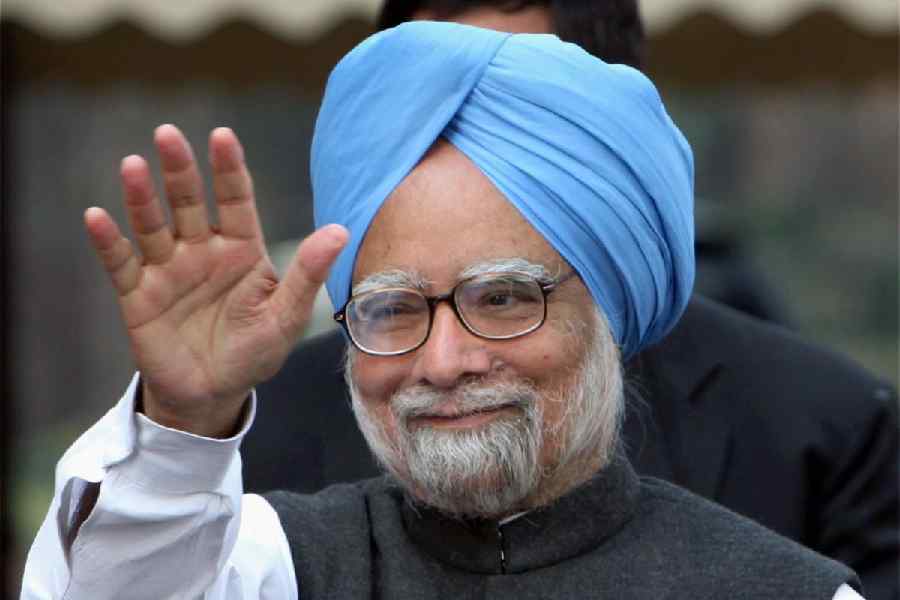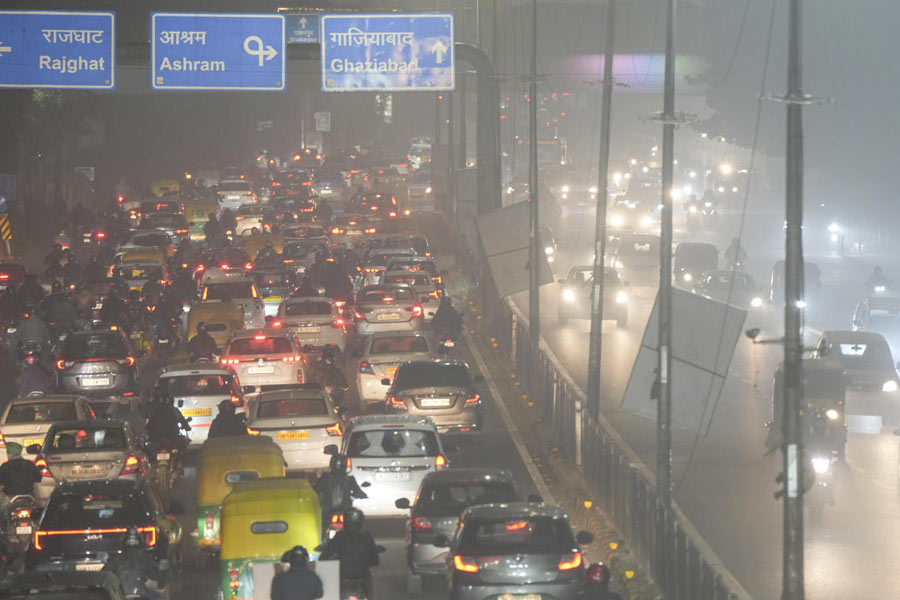|
|
“The lamps are going out all over Europe; we shall not see them lit again in our lifetime.” Edward Grey, the British foreign secretary, uttered these words in August 1914 on the eve of Britain’s entry into the First World War, as he stood watching the evening lamps being lit from his window in the Foreign Office in Whitehall. Substituting the word Europe with West Bengal, Buddhadeb Bhattacharjee could utter the same sentence sitting in his chamber in Writers’ Buildings and reflecting on the consequences of Ratan Tata withdrawing the Nano car project from Singur.
The abortion of the small-car factory will mean the end of even the trickle of investments that has been coming into West Bengal. One does not have to be a prophet of doom or a great reader of tea-leaves and horoscopes to predict this. Common sense suggests this. In the late 1960s, a kind of terrorism perpetrated by communists forced capital to flee from the state. In the beginning of the 21st century, another kind of terrorism carried out by a rabid anti-communist will lead to another flight of business and industry. Both did what they did in the name of democratic rights and of benefiting the poor. This coming together of opposites is not a mere coincidence. It hides a deeper sociological truth about West Bengal and about those who live here.
Bengalis are against industrialization. If this sounds like too harsh a judgment, look at the evidence. In the middle Sixties, when there was a flight of capital, was there any widespread movement on the part of any section of civil society or of any major political party to stop the flight, to campaign against those forces that caused the flight? The answer is in the negative. But not only that, all the voices that mattered in Bengali culture and society were by and large in favour of the forces and the politics that were directly creating the climate that made it impossible for capital and investment to flourish. In the mass and intellectual euphoria that followed the first communist takeover of power under the aegis of the United Front in 1967, the focus was on bringing about a socio-economic transformation in favour of the rural poor. There was little concern about how wealth would be generated, how economic development would take place and how long-term employment would be created. In those heady days, capitalists were identified as enemies, and they were insulted and physically humiliated.
In the wake of the promise of a rural transformation, there came a movement that spread largescale violence first in parts of the rural world, and then, having failed there, in Calcutta and its suburbs. The initiators of this violence and these killings were hailed in Bengal, in anecdote and anthem, as heroes. And they still are.
After their return to power as the Left Front in the late Seventies, the communists did not follow any policies to encourage the return of industries to the state. On the contrary, economic policies were directed towards agriculture and land reforms. These were trumpeted as the Left Front’s great achievement. Even sections of the intelligentsia hailed it as such without bothering to look at what was happening to the rest of the economy, especially industry. The so-called agrarian achievement served to consolidate the communists’ rural vote bank.
What is equally significant is that the forces opposed to the Left in West Bengal did not articulate any alternative economic programme with industry-based economic development as its focus. The sole anti-Left spokesman, Mamata Banerjee, had (one should add, has) no vision. All she could say was that she would do whatever the Left was doing, but she would do it with greater efficiency and honesty. Industry escaped the hunters for votes.
But both political forces had substantial popular support, one in the rural world, and the other in Calcutta. On the basis of the rural vote bank they had created, the communists won election after election with thumping majorities. The middle and upper and middle classes of Ballygunge and Alipore, oblivious of the monster they were creating, voted for Mamata Banerjee even though she had no programme for the industrialization of West Bengal. Her calling card was that she was anti-communist. This was enough for her to win successive elections with huge margins. Thus industry featured nowhere in the voting preferences of the West Bengal electorate.
The turn of the Left Front government in favour of industrialization that was noticeable from the beginning of the 21st century is fraught with contradictions. There is no evidence that the CPI(M), the leading force of the Left, has abandoned its political practice of calling bandhs and holding rallies, both of which disrupt work and are thus anathema to investors. What is more important is that events have made it clear that the CPI(M), whenever it suits its purpose, will not hesitate to unleash its cadre and muscle power. The communists have made no effort to revive work culture and, despite the West Bengal government’s apparent enthusiasm for industrialization, at the national level the CPI(M) has not abandoned its anti-capital rhetoric. The West Bengal government has ardently wooed a few industrialists, but has done precious little to create conditions that attract industrialists without offering them sops.
The opposition to the Left remains tied to the agenda of opposing whatever the Left does. Recent events in Singur have shown that populism continues to take precedence over industrialization.
It is significant that last year in November, thousands of ordinary people, led by artists and intellectuals took to the streets of Calcutta to protest against the atrocities being perpetrated by the CPI(M) cadre on the poor people of Nandigram. That had raised hopes. It had seemed then that civil society in Bengal, in gestation since the 19th century, had come of age. It was an illusion, however. No one, save a handful of young men and women in Sector V in Salt Lake, marched in favour of industrialization against Mamata Banerjee’s ridiculous dharna outside the Nano plant. Some stray voices of criticism were heard. Very few even stood up to make the point that she, by using her cadre, was violating the law by blocking a major roadway. The cause of industrialization obviously does not stir the Bengalis.
The reasons for this are not difficult to locate. From the 1940s, communism and a Left radicalism has been the dominant ideology in West Bengal. It has informed, if not imbued, all aspects of culture and politics. The ideology first mesmerized the intelligentsia and then through the communist party and its various front organizations acquired its position of dominance. The international situation and Nehruvian socialism aided the process. By definition, the goal and the rhetoric of this ideology were anti-capital. Such was the power of this rhetoric that it influenced those who were politically opposed to communism. They also remained anti-industry. Like an incantation, it was repeated that capital and industry were evil, till it became (and has so remained) part of the culture and the consciousness of the people of West Bengal.
Till this changes, nothing will alter in this state. The intelligentsia is even today wedded to a discredited ideology and political practice, smug in its past beliefs and blind to its present responsibilities. The political parties, whatever be their outward manifestations and visible garb — torn sari or white dhoti and punjabi — continue to believe in the strength of street politics and cadre power. That is the present history of West Bengal.
********
There is a very famous Agatha Christie story in which a group of people collectively murder someone on the Orient Express. It took all the grey cells of Hercule Poirot to arrive at the conclusion that it was not an individual, but a collective act of killing. West Bengal’s future has been murdered. But it will need no Poirot to conclude who perpetrated the murder on the Bengal express. It was a collective act.
Human kind cannot bear too much reality, but the people of Bengal have to live with the fact that they have brought about the darkness that now envelops them, all of us, you, me and the future generation.











